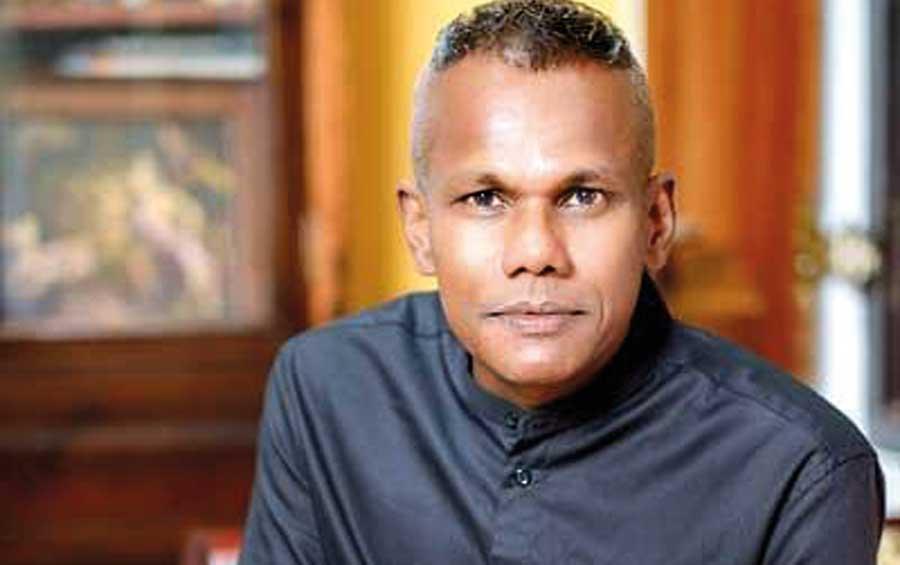07 Sep 2020 - {{hitsCtrl.values.hits}}

As the ending note to a recent interview he had with Upul Shantha Sannasgala (of which the video can be viewed on YouTube, Visakesa Chandrasekaram said that, as a society, we have agreed to a “code of silence” regarding both the 1987-90 political violence and the circumstances surrounding the civil war’s end in 2009.
“What took place was hidden,” Chandrasekaram claimed. 
“Only a few knew about what exactly happened and no one wants to talk about it either.”
What Chandrasekaram directs our attention to is the struggle between memory and forgetting – rather, enforced forgetfulness – which conflict societies like Sri Lanka experience as a political reality.
30 years after an event which is the closest the Sinhala speaking districts of the country had experienced to a holocaust, very little has been done at an official level to recognize and accept responsibility for the immeasurable damage the 1987-90 violence wreaked on the people and the country. It was at all levels an unprecedented phenomenon.
The rebellion’s violent suppression was an experiment we weren’t to see the last of in a hurry. Post-conflict reconciliation had neither method nor an inclination towards preserving memory. While the state hasn’t openly apologized, the memorial set up closer to the parliament was later removed from that site.
Movements for justice like the “Mothers’ Front” have dissolved with time. A lone memorial stands at Seeduwa. Chandrasekaram’s Paangshu is produced against such a backdrop: a complacent and uncaring world that is too ready to let the dust settle in for good.
 But, for Chandrasekaram, Paangshu is a logical extension of a larger political and activist commitment. Even though he first registered with the mass (Sinhala-speaking) imagination with his film Frangipani (Saya Pethi Kusuma) – and now, Paangshu in 2018 – Chandrasekaram’s literary and artistic origins at the national level runs at least 20 years back in time.
But, for Chandrasekaram, Paangshu is a logical extension of a larger political and activist commitment. Even though he first registered with the mass (Sinhala-speaking) imagination with his film Frangipani (Saya Pethi Kusuma) – and now, Paangshu in 2018 – Chandrasekaram’s literary and artistic origins at the national level runs at least 20 years back in time.
Chandrasekaram is also a modern-day renaissance man: a theatre performer, an award-winning dramatist, a novelist, a songwriter, an academic, a film director, a human rights activist, and a legal practitioner. His operation in this vast area is seamed by a deep political consciousness and a social commitment for truth. From his earliest work to the latest, this thread is visible at multiple levels.
Chandrasekaran’s first appearance in the English circuit was with his Gratiaen Prize-winning play Forbidden Area: a prize he shared with Neil Fernandopulle’s short story collection Shrapnel (2001).
After a decade spent away from home, he re-entered the ring in 2011 with his novel Tigers Don’t Confess.
A powerful novel, Tigers Don’t Confess sparked my own interest in Chandrasekaram, which I adapted to the course on Sri Lankan Writing I was teaching at the time at Sri Jayewardenepura. Tigers Don’t Confess examined how, in prosecuting Tiger suspects during the war, evidence was fabricated or obtained through torture.
Its scope overlapped with Chandrasekaram’s doctoral study which was published as The Use of Confessionary Evidence under the Counter-terrorism Laws of Sri Lanka” (2017). Chandrasekaram draws on 24 case studies to contextualize the exceptional laws and law-enforcement modes in operation in the second half of the 1980s. In 2015, Chandrasekaram published a second novel, The King and the Assassin (Its simultaneous Sinhala version was titled Raja Saha Ghathakaya), which was shortlisted for the short-lived Fairway National Award that year.
Chandrasekaram’s role within Sri Lankan creative practice is important for several reasons.
"Movements for justice like the “Mothers’ Front” have dissolved with time. A lone memorial stands at Seeduwa. Chandrasekaram’s Paangshu is produced against such a backdrop: a complacent and uncaring world that is too ready to let the dust settle in for good"
The deeply political and socially-conscious approach he ushers is refreshing for the English circuit; especially, as Chandrasekaram doesn’t compromise his art in the name of politics. But, moreover, he is a trilingual creator and has the power to transcend what our politicians have promised us should be kept in separate jars.
For a generation whose legacy is unmarked graves and silenced stories, Chandrasekaram proposes exhumation and reconstruction.
Milan Kundera famously said that “the first step of liquidating a people is to erase its memory, to destroy its books, culture, and history” and then to “have somebody write new books, to manufacture a new culture”. Forgetting is a political act, and to make people forget is the prerogative of a certain kind of authoritarian /colonizing politics. The struggle against such erasure is equally political and, as an artist, Chandrasekaram re-centres this power dialectic in his work.
In my opinion, the artist we need in a generation burdened with the social responsibility of reconciliation cannot shy away from exhuming bodies. Both crude and subtle means will have to be employed to set the primary condition that memory is sacred and that it should be contained. Creative and persistent negotiations should then follow to bargain with the gods to culture meaningful public memories of our conflict pasts. Sadly, ours is not a generation that can be satisfied by being the children of William Wordsworth. To have Visakesa Chandrasekaram in that brigade is both good fortune and a bonus.
27 Nov 2024 5 hours ago
27 Nov 2024 6 hours ago
27 Nov 2024 6 hours ago
27 Nov 2024 7 hours ago
27 Nov 2024 7 hours ago